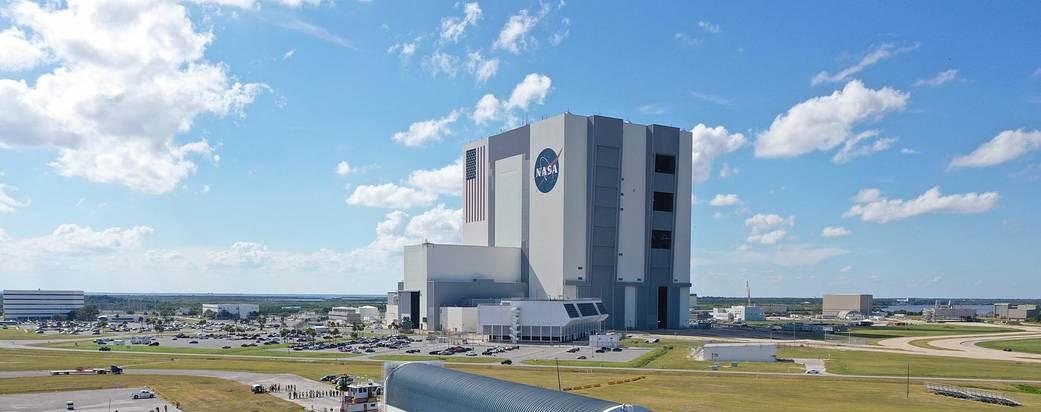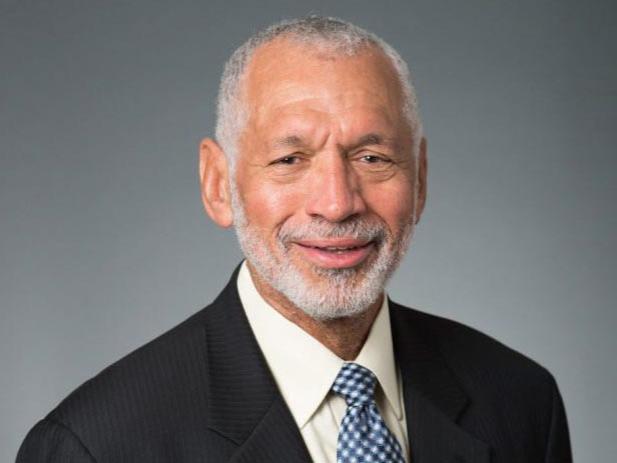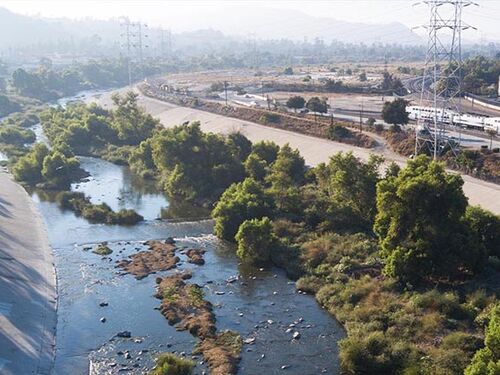Reflections on Commercial Crew and Cargo Missions
Perspectives
By guest contributor Charles F. Bolden Jr.
Last update November 16, 2020


NAE Perspectives offer practitioners, scholars, and policy leaders a platform to comment on developments and issues relating to engineering.
NAE member Charles F. Bolden Jr. is the former NASA administrator (2009–17).
At 3:22 pm EDT on May 30, 2020, the SpaceX Crew Dragon 206 Endeavor on a Falcon 9 rocket roared off the pad at the Kennedy Space Center’s Launch Complex 39A, carrying the first NASA crew, Doug Hurley and Bob Behnken, on a commercial spacecraft. NASA’s first operational step in commercial human spaceflight had finally been taken. And thankfully it achieved a safe splashdown at 2:48 pm on August 2, 2020.
It is nonetheless important to understand that even with this first successful mission now in the history books, we are a long way from having the necessary design, development, test, and evaluation to declare success with commercial crew.
This was decades in coming, much longer than most of us realize, and it was not an easy journey. Having been a part of NASA during much of the process, I’d like to share some of my perspectives on the incredible and historic achievements to date. [1]
To better inform myself of all the work that went into getting to this point, I went back to a group of NASA executives with whom I had the privilege to work during my almost 8 years as administrator. Collectively referred to as “the technical authorities,” they were the chief health and medical officer, chief engineer, and chief of safety and mission assurance. [2] The people in these positions were responsible to me for the technical requirements applied to all our programs throughout their lifecycles.
The Beginnings of Commercial Spaceflight
A couple of decades before the first NASA request for information was released for a commercially sourced cargo resupply vehicle, President Ronald Reagan signed the Commercial Space Launch Act of 1984 stating that one of the objectives of his administration would be “the encouragement of the private sector in commercial space endeavors.” [3] Earlier that year, NASA administrator Jim Beggs, former executive vice president of General Dynamics, had established the NASA Office of Commercial Programs to encourage the private sector to become more involved in using space for commercial purposes. The office increased NASA’s efforts to find private sector uses for NASA-developed technology. At the same time, the Federal Aviation Administration (FAA) established its Office of Commercial Space Transportation to both regulate commercial launches and encourage the growth of the commercial spaceflight industry.
This enthusiasm for commercial space development was cut short on January 28, 1986, when the nation and the space world suffered the tragic loss of the Space Shuttle Challenger and her 7-member crew just 73 seconds after liftoff. When NASA returned to shuttle flights in 1988, the movement for a viable commercial space transportation market picked up again, only to be tragically interrupted by the loss of the Space Shuttle Columbia and her 7-member crew just 16 minutes from her scheduled touchdown at the Kennedy Space Center’s Shuttle Landing Facility on February 1, 2003.
After the loss of Columbia, on January 14, 2004, President George W. Bush issued the Vision for Space Exploration, calling for NASA to terminate the Space Shuttle Program (after completion of assembly of the International Space Station [ISS], then projected for 2010), pursue opportunities for the international and commercial sectors to support US space exploration goals, and provide transportation and other services supporting the ISS and exploration missions beyond low Earth orbit (LEO). [4]
Fiscal Challenges
From the beginning NASA’s greatest challenge to commercial spaceflight was the fiscal battle between presidential administrations and the Congress. This became my nemesis and primary focus as administrator. The Bush 43 administration enjoyed much more success than was possible with the administration of President Barack Obama. My belief is that this was due to the Bush administration’s interest in commercial cargo transportation while allowing NASA to remain focused on NASA-owned and -operated crew transportation to LEO and beyond.
In 2005 NASA administrator Mike Griffin had allocated $500M to establish the Commercial Orbital Transportation Services program. This led to the eventual selection of the Space Exploration Technologies Corporation (SpaceX), Orbital Sciences Corporation, and (later) Sierra Nevada [5] as the winning competitors for funded Space Act Agreements (SAAs) to design and build cargo vehicles to supply the ISS. Because the SAA is a non-FAR (Federal Acquisition Regulation)-based agreement, the contractor has much more freedom to design, build, and test without NASA oversight and regulation.
NASA’s Commercial Crew Program
After termination of the Constellation Program at the beginning of the Obama administration, we turned in earnest to the development of a Commercial Crew Program (CCP). We established a detailed 2-year review process of long-standing NASA regulations and standards such as the Human Rating Standards and Engineering Specifications. This allowed all interested commercial companies to negotiate with NASA engineers and health and medical professionals on new standards and regulations that would take the “best of both worlds”—NASA/government and private industry—to create the design, manufacturing, and operating guidelines for vehicles and systems that NASA would use to transport crew members and non-NASA astronauts to LEO and beyond.
One of the critically important things to understand about the CCP is that it owes much of its success to the Commercial Orbital Transportation Services (later the Commercial Resupply System) and the lessons learned in its development. Former associate administrator for Human Exploration and Operations Mission Directorate Bill Gerstenmaier has gone even farther, opining that our work on the ISS program enabled both the commercial cargo and crew programs to be successful.
As might be expected, we had to overcome some arrogance on the part of the NASA and contractor teams. It took time and was difficult, but we were fortunate to have strong leadership among all the players, with the patience to let the teams work through points of potential conflict. Work on commercial cargo was essential as it allowed for a lot of technical and organizational learning in a rapid-turnaround, slightly less high stakes environment. In the ISS program, NASA was required to accept alternate design standards. Pressure vessel requirements are different in Europe, Japan, Canada, and Russia. Structural design practices and electrical standards are different. Even manufacturing and build processes were different. We had to decide how to allow the European Automated Transfer Vehicle and Japanese Transfer Vehicle to approach ISS for capture by the Canadian arm for cargo delivery. We were essentially developing the rendezvous and docking procedures that would later be used in commercial cargo and crew. This all forced our teams to become open to other ways of building space hardware, and it allowed our engineers to expand their thinking as they realized that other approaches to safe crew flights were possible. The flight techniques developed for these foreign vehicles were applied for commercial cargo and crew and minimized the flight testing needed for commercial crew.
Also important in progressing to commercial crew and the recent success of Demo-2 was the fact that commercial cargo wasn’t considered absolutely essential to the ISS; a failure would be acceptable as long as another cargo mission could be flown in time to maintain the logistics inventory of the station. Since the only real requirement was to not hit the station, higher risks could be taken, allowing the developers more freedom to innovate and make rapid changes.
We had informed Congress and the public continuously that we should expect failures in the cargo program and that it would be critical for the success of the program that we not be subjected to long independent reviews and extensive delays in the program after any accident. As we had warned, we suffered the loss of three cargo vessels over a 6-month period: the Orbital Antares with Cygnus (October 2014), Russian Progress (April 2015), and SpaceX CRS-7 Dragon (June 2015). Congress, the Obama administration, and the American public all gave us the understanding and leeway we had requested and we were able to recover from each accident and get each vehicle back into operation after thorough internal investigations and corrective actions. Among our lessons learned were that the Orbital Cygnus cargo vehicle could be flown on a variety of launch vehicles while SpaceX learned about the criticality of parts, inspection, and systems design. As a result, SpaceX added a reliability function to its organization. Over the course of our early cargo missions we also suffered a number of smaller anomalies that allowed NASA and its commercial partners to refine the engineering practices needed for commercial crew.
Concluding Thoughts
Perhaps the greatest challenge for NASA in putting together this government-industry team was to educate the private sector on the critical demands of keeping crew members alive and well-functioning during spaceflight. As Chief Health and Medical Officer Rich Williams wrote to me [6] : From a health and medical standpoint, challenges have been particularly difficult. Engineering programs are driven by requirements, which are in turn driven by evidence-based standards. This is true regardless of the discipline involved. Health and medical programmatic requirements are driven by standards that are derived from biologic and health related data. Engineering disciplines all have much in common with regard to underlying evidence, testing, processes, and analytic tools. Health and medical disciplines are based in an entirely different branch of science, with biologic variability as a key challenging component. Health and medical culture is also very different from engineering culture. Credibly translating and applying health and medical standards and requirements in the setting of engineering programs has always been challenging. In the setting of commercial company cultures mingling with traditional NASA culture in pursuit of human space flight, the health and medical requirements were particularly challenging and vexing, at some points, to all involved.
Much could be written about the standoff between the Obama administration and the Congress on funding for the Commercial Crew Program. In the interest of time and space, suffice it to say that it took six fiscal year budget cycles (FY2011 to FY2016) before NASA’s commercial crew budget request was fully funded. As a result, the hoped-for availability of a US commercial crew capability as early as 2014 slipped to 2020 and we are still years away from demonstrating the business viability of commercial crew space transportation. [7]
I will close with a sentiment that I expressed as NASA administrator [8] : The commercial space industry will be an engine of 21st century American economic growth and will help us carry out even more ambitious deep space exploration missions.… America’s best days in space exploration are ahead of us thanks to the grit and determination of those in government, and the private sector, who dare to dream big dreams and have the skills to turn them into reality.
Notes:
[1] Although I have an engineering test pilot’s background, I will refrain from trying to tell those who have made the practice of engineering their life’s work anything about the engineering involved in the design and development of the Crew Dragon. I refer readers to the perspective prepared by Gwynne Shotwell.
[2] During my tenure the following served as the technical authorities: Richard Williams (2002–16) and J.D. Polk (2016–present), chief health and medical officers; Mike Ryschkewitsch (2002–14) and Ralph Roe (2014–present), chief engineers; and Bryan D. O’Connor (2002–11) and Terry Wilcutt (2011–present), chiefs of safety and mission assurance.
[3] Ronald Reagan, “Statement on Signing the Commercial Space Launch Act,” October 30, 1984.
[4] A detailed history of the development of NASA’s commercial space programs is in Commercial Orbital Transportation Services: A New Era in Space Flight (NASA/SP-2014-617) by Rebecca Hackler with Rebecca Wright (2014).
[5] Rocketplane Kistler Limited Inc. was one of the first two commercial providers competitively selected by NASA in August 2006, but it was unable to meet the financial commitment milestones established under the agreement and was replaced by Orbital Sciences Corporation in 2008.
[6] In an email July 19, 2020
[7] In its 2015 Annual Report, NASA’s Aerospace Safety Advisory Panel (ASAP) commented on the impact of program funding shortages: “The [Program] was underfunded during the critical early years of development. Specifically, the Program received only 57 percent of the requested funding in fiscal year (FY) 2011 through FY 2013. This underfunding in the critical early system design years resulted in a design at Critical Design Review that was not as mature as it might have been…[and] added to the program management and safety challenges. Going forward, there is high risk that the Program may not receive sufficient funding to execute the planned program. Careful attention and close cooperation among NASA, the White House, and the Congress is necessary to deliver safe and effective transportation to low Earth orbit.”
[8] “NASA Hails Success of Commercial Space Program Private Space Station Resupply Underway, Plans Readied for Astronauts,” NASA press release, November 13, 2013.Disclaimer The views expressed in this perspective are those of the author and not necessarily of the author’s organizations, the National Academy of Engineering (NAE), or the National Academies of Sciences, Engineering, and Medicine (the National Academies). This perspective is intended to help inform and stimulate discussion. It is not a report of the NAE or the National Academies. Copyright by the National Academy of Sciences. All rights reserved.
Disclaimer
The views expressed in this perspective are those of the author and not necessarily of the author’s organizations, the National Academy of Engineering (NAE), or the National Academies of Sciences, Engineering, and Medicine (the National Academies). This perspective is intended to help inform and stimulate discussion. It is not a report of the NAE or the National Academies. Copyright by the National Academy of Sciences. All rights reserved.
